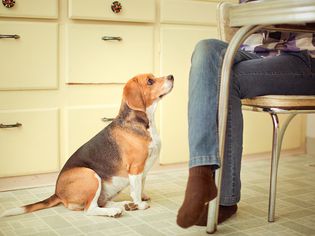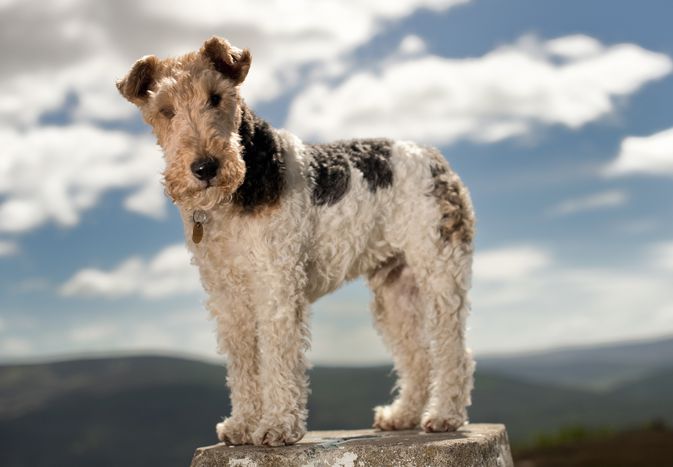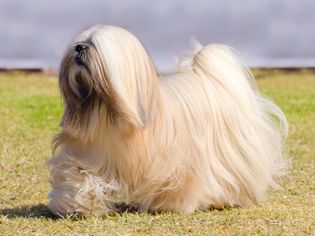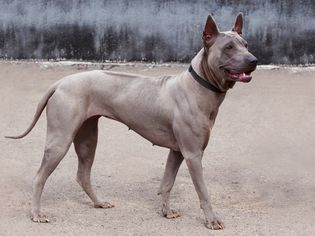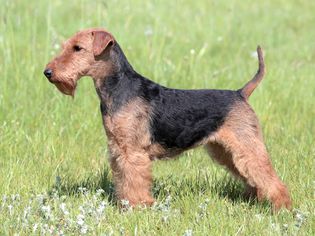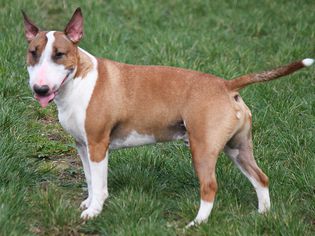The Anatolian shepherd is a large livestock guardian dog who hails from the countryside in Turkey. These calm dogs were bred to protect their flocks—sheep, goats, or cattle—on their own, deterring any predators with their big bodies and loud barks.
They're independent dogs with protective instincts, so they need plenty of socialization early in their lives. Then you have their size (up to 150 pounds), barking, and large space requirements. Anatolian shepherds can be good family dogs, but many other breeds are better suited for life as a companion dog.
Learn more about the Anatolian shepherd dog, including their history, care needs, and temperament.
Breed Overview
GROUP: Working
HEIGHT: 27 inches (female), 29 inches (male)
WEIGHT: 80 to 120 pounds (female), 110 to 150 pounds (male)
COAT: Short, smooth
COAT COLOR: Blue fawn, brindle, fawn, liver, red fawn, white, biscuit and white, or gray fawn with various markings and masks
LIFE SPAN: 11 to 13 years
TEMPERAMENT: Loyal, alert, protective
HYPOALLERGENIC: No
ORIGIN: Turkey
Characteristics of the Anatolian Shepherd
The Anatolian shepherd generally has an independent and watchful temperament. These dogs don't display overly affectionate personalities, and aren’t cuddly. But they are loyal to their families, some even expressing possessive behavior. However, they can be wary of strangers, which is why socializing your puppy is of the utmost importance.
Some Anatolian shepherds can be prone to barking, especially if they detect a threat. (That's their procedure when they're protecting their flocks.) From a big dog, those woofs can be awful loud.
| Affection Level | Low |
| Friendliness | Low |
| Kid-Friendly | Medium |
| Pet-Friendly | Medium |
| Exercise Needs | Medium |
| Playfulness | Medium |
| Energy Level | Medium |
| Trainability | Medium |
| Intelligence | Medium |
| Tendency to Bark | Medium |
| Amount of Shedding | Medium |
History of the Anatolian Shepherd
The Anatolian shepherd is an ancient dog breed whose roots stretch back centuries. They hail from the Anatolia region of Turkey, also referred to as Asia Minor, where they are thought to have developed from a line of shepherds (the Coban Kopegi, or “shepherd’s dog”) that was bred to protect livestock.
They are the perfect dogs for the task: large and imposing enough to scare predators away from sheep and goats while quick and strong enough to survive an animal attack. They lived without a ton of food, and their fur and build are hearty enough to withstand bitterly cold nights. They still look after flocks around the world to this day.
Anatolian shepherds first arrived in the United States before World War II. The U.S. Department of Agriculture's secret "Project Sheepdog" was meant to find the perfect guardian dog for American sheep, and researchers considered the Anatolian. Then the war broke out and the project was abandoned.
Anatolian shepherds made their way back to the U.S. in the 1950s. And in 1996 the American Kennel Club first recognized the breed.
Anatolian Shepherd Care
Proper training and socialization are essential to ensure you have a well-adjusted Anatolian shepherd. While this breed doesn't require an excessive amount of exercise, they'll need plenty of space to roam. Thankfully, their grooming needs are straightforward and limited.
Exercise
Aim to give this breed at least an hour of exercise per day via:
- Walks
- Jogging
- Games of fetch
- Agility
- Dog sports
- Swimming
- Puzzle toys
Anatolian shepherds can show destructive behaviors, such as digging holes or ripping through drywall, if they aren’t given enough mental or physical stimulation.
They don't need a ton of action, but they do need space. The breed—developed to roam the countryside unsupervised—doesn’t do very well living in small spaces, such as an apartment, and requires room to roam.
Ideally, they should have access to a securely fenced yard to be able to stretch their legs. But note that the fence should be high and solid enough so this protective breed can’t interact with people and dogs they don't know.
Grooming
The Anatolian shepherd’s thick coat is fairly low maintenance. You’ll generally have to brush weekly to remove loose fur. But expect heavier shedding periods twice a year, often in the spring and fall, when you’ll have to brush more often to keep up with the loose fur.
Plan on a bath roughly every month, depending on how dirty your dog gets. And check your dog’s nails on a monthly basis as well to see whether they need a trim. Also, aim to brush their teeth daily. And check their ears at least weekly to look for wax buildup and any abnormalities.
Training
Training an Anatolian shepherd can be a bit of a challenge. The working breed lives isolated lives, so many of them are slow to respond to cues. Consistent training from a young age using positive reinforcement is important for success. Enroll in a training class as soon as your puppy is current on their vaccinations.
In fact, do you have 10 hours a week to dedicate to training and socialization? That's what you'll need to ensure a well-adjusted Anatolian shepherd. (However, Anatolian shepherds should never receive protection or guard dog training. Those can exacerbate their tendency toward aggression.)
Anatolian shepherds are instinctively wary of strangers and can be quite protective. Training and socialization from a young age are imperative to keep this instinct manageable. A dog of this breed that’s not well-socialized will commonly become aggressive toward other animals and even people.
Common Health Problems
In general, Anatolian shepherds are a healthy breed. In fact, while such health issues as hip dysplasia and bloat commonly affect several other breeds, they are relatively rare in Anatolian shepherds. But this breed still is prone to some hereditary health issues, including:
- Anesthesia sensitivity: This is not an issue unless your dog needs anesthesia for some kind of surgery.
- Entropion: This causes dogs' eyelids to roll inward, leading to the eyelashes rubbing on the cornea.

The Spruce / Kelly Miller
Diet and Nutrition
Make sure fresh water is always available for your dog. And feed a high-quality, nutritionally balanced canine diet. Traditionally, this breed does well on a lamb and rice diet. As a breed, Anatolian shepherds don’t tend to overeat. But it’s still important to monitor treats and other extra food to prevent excess weight gain.
It’s common to feed two measured meals per day. But you should discuss both the type of food and the amount with your vet to make sure you’re meeting your dog’s individual needs.
Where to Adopt or Buy an Anatolian Shepherd
While Anatolian shepherds aren’t a common breed, it’s still worth checking local animal shelters and rescue groups for a dog in need of a home. If you’re looking for a puppy from a reputable breeder, expect to pay around $1,500 to $3,500, though this can vary widely based on dogs' bloodlines.
For further information to help connect you with an Anatolian shepherd, check out:
- Anatolian Shepherd Dog Club of America
- National Anatolian Shepherd Rescue Network
Anatolian Shepherd Overview
The Anatolian shepherd can be the right dog for the right family. These are active canines who need a lot of space and plenty of exercise and mental stimulation, along with proper training. But this is a healthy breed with basic grooming needs.
Pros of Anatolian Shepherds
- Loyal, protective
- Limited grooming needs
- Generally healthy
- Doesn't need lots of exercise
- Calm
Cons of Anatolian Shepherds
- Needs socialization and training, which isn't always easy
- Independent, stubborn
- Not a fan of strangers
- Needs plenty of space
- Large, perhaps too big for small children
- Can be loud barkers
More Dog Breeds and Further Research
Make sure to do diligent research before deciding whether an Anatolian shepherd is right for your lifestyle. Talk to vets, breed owners, rescue groups, and reputable breeders to learn more. Try to spend some time with Anatolian shepherds if possible.
If you’re interested in similar breeds, check out:
- Akita
- Bernese Mountain Dog
- Bullmastiff
There’s a whole world of potential dog breeds out there—with a little research, you can find the right one to bring home!
- Are Anatolian shepherds aggressive?
Anatolian shepherds' protective nature can turn to aggression without proper training and socialization. It's important to expose the breed to different people and animals from a young age to boost their comfort and confidence.
Are Anatolian shepherds high maintenance?Young Anatolian shepherds are high maintenance because you have to dedicate hours to training and socializing them, but an mature, independent Anatolian shepherd isn't as much work.
Are Kangal dogs and Anatolian shepherds the same?Anatolian shepherds are similar to Kangal dogs. The Kangal shepherd is another guardian breed from Turkey, though some breeders and organizations equate them with the Anatolian shepherd. Other organizations—like The Kennel Club in the United Kingdom—treat them as separate breeds.


